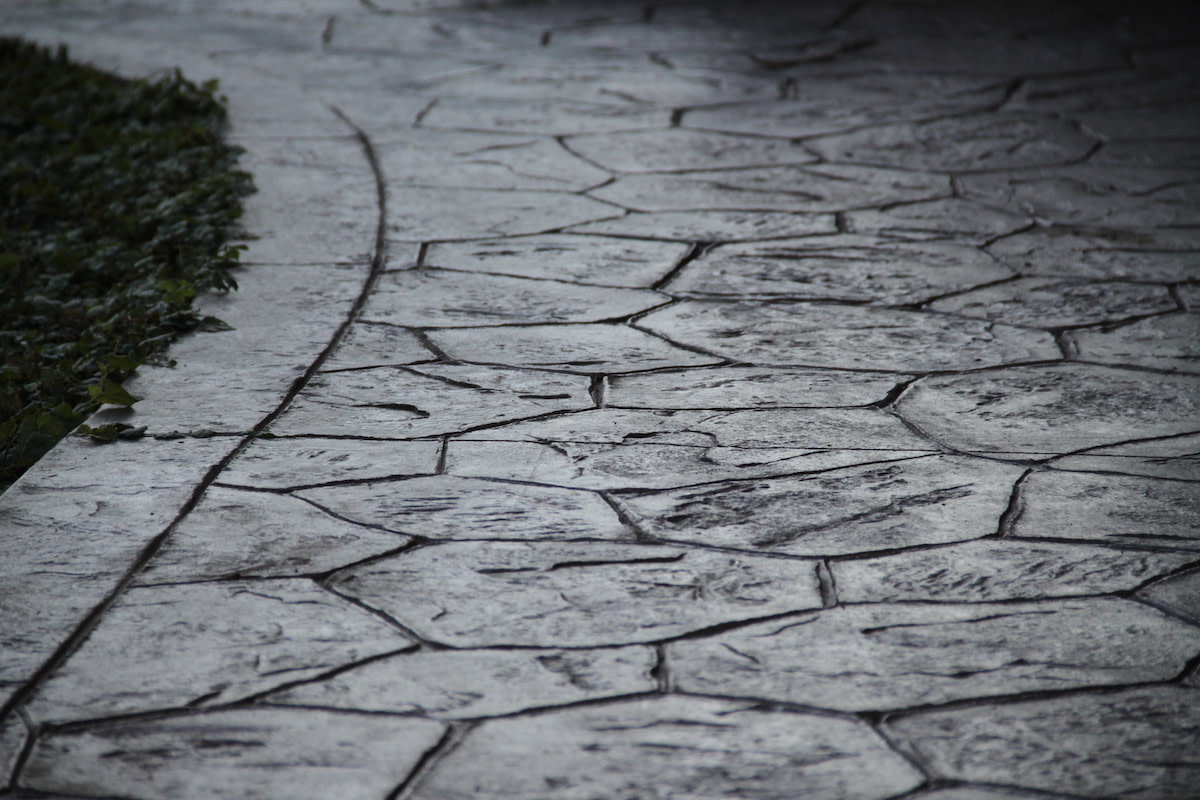Guide to Stamped Concrete: 4 Stamped Concrete Patterns
Written by MasterClass
Last updated: Jun 8, 2021 • 3 min read
Stamped concrete is a low-maintenance option when flooring outdoor spaces.
Learn From the Best
What Is Stamped Concrete?
Stamped concrete, also called decorative concrete, is concrete that has been imprinted using rubber stamps. The imprint gives the concrete surface a similar look and texture to natural stone, brick, or wood planks. Stamped concrete is useful for walkways, driveways, patios, countertops, pool decks, and interior floors, and it resembles natural materials, like stone or wood.
Stamped concrete is an inexpensive and low-maintenance alternative to more expensive building materials. When used in landscaping and outdoor spaces, concrete stamping is a simple way to increase a home’s curb appeal.
Stamped Concrete vs. Pavers: What’s the Difference?
Stamped concrete is an alternative to pavers or paving stones, which are individual stones or bricks laid to create flooring. There are three key differences between these flooring options:
- 1. Cost: Stamped concrete is more cost-effective than paving stones by square footage. The installation is also less expensive because it can be poured as one concrete slab. Pavers need to be individually installed piece by piece, which means paver installation takes longer and is more expensive.
- 2. Maintenance: It is easier to clean one large slab of stamped concrete than individual pavers. On the other hand, it is more challenging to repair stamped concrete, which will crack and stain over time, requiring you to remove or paint over the entire slab. You can simply mend pavers by removing the individual defective piece. Over time, there is a higher cost to repair and maintain stamped concrete than pavers.
- 3. Durability: Pavers are four times stronger than slab concrete and can hold more weight. Pavers can last more than 50 years, whereas slab concrete lasts around 25 years.
4 Stamped Concrete Patterns and Colors
There are unlimited pattern and color options for stamped concrete, and homeowners can ask for customizations. Consult a concrete contractor for design ideas. Popular concrete designs and concrete colors include:
- 1. Cobblestone: This pattern is typical for concrete driveways and as walkways for homes with a more traditional look. Homeowners typically choose various shades of gray to make the concrete look like stone.
- 2. Flagstone: This is a popular option for a stamped concrete patio or pool deck. Multiple colors can come in one slab, such as grays, browns, and reds.
- 3. Ashlar slate: Asher slate is a good choice for concrete walkways and patios. Combine shades of browns and reds to mimic the multi-color appearance of real slate.
- 4. Wood: Concrete floors for patios and living spaces can have the look of wood. Patterns and different colors make the texture look like real wood planks.
How to Maintain Stamped Concrete
Stamped concrete requires less day-to-day maintenance than pavers, but it does require care to stay in good condition. The frequency of maintenance will depend on weather conditions and foot traffic. Consider the following maintenance needs for stamped concrete:
- Sweep and wash regularly. Sweep stamped concrete regularly. Use a garden hose or pressure washer and some mild detergent for deep cleaning. If anything spills on the stamped concrete, clean it immediately to prevent staining.
- Use coatings and sealers. To prevent slippage, add a slip-resistant coating to the poured concrete after it sets. Color hardeners and sealers can prevent color fading and keep water and moisture from seeping into the concrete. You will have to reseal the concrete every two to three years, especially if cracks develop.
- Patch cracks. The concrete will crack, especially if it is subject to extreme hot and cold weather and thawing. Manufacturers sell colored cement paste or color patches to fill in concrete cracks. When choosing a concrete pattern, choose a pattern where damage will not be as noticeable to minimize the need for patching.
Ready to Learn the Ins and Outs of the American Housing Market?
All you need is a MasterClass Annual Membership and our exclusive video lessons from prolific entrepreneur Robert Reffkin, the founder and CEO of the real estate technology company Compass. With Robert’s help, you’ll learn all about the intricacies of buying a home, from securing a mortgage to hiring an agent to tips for putting your own place on the market.
